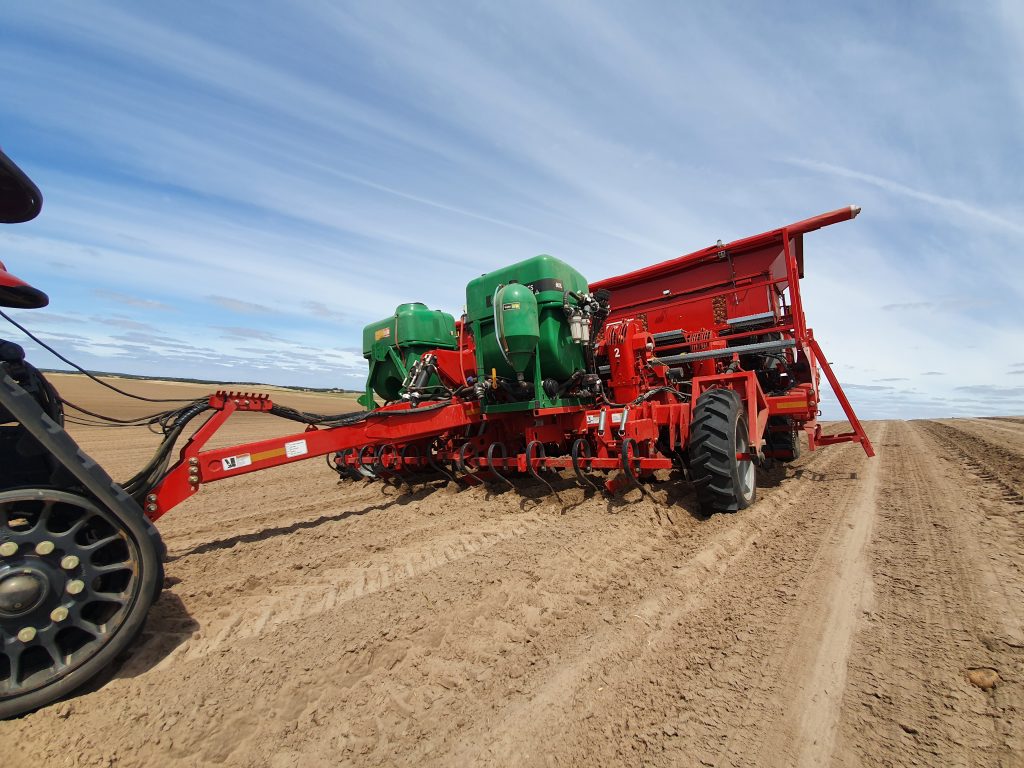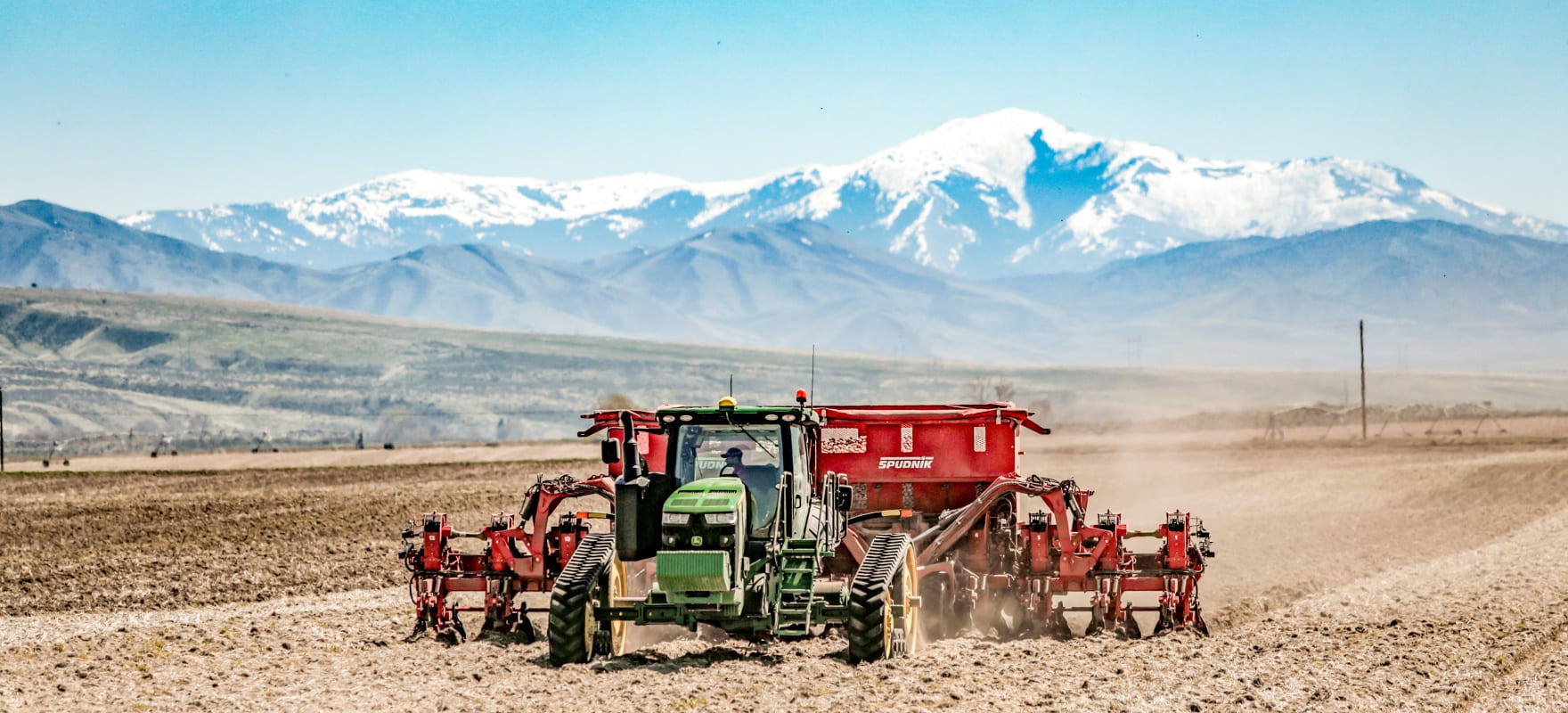The latest in bed planting technology has arrived in Australia, enabling certified potato seed growers to produce a more uniform crop while conserving water and increasing nutrient uptake. In this article, South Australian certified seed potato grower Clint Muster speaks about his experiences with the new bed planter and how implementing this technology has benefited his business.
A new nine-row bed planter has proven just the trick to producing the smaller, uniform-shaped tubers preferred by certified seed producers and crisp processors.
Still a relatively new concept in Australia, bed planting increases planting density by up to 20 per cent to improve water conservation and nutrient uptake, which in turn restricts tuber size.

Certified potato seed grower Clint Muster took delivery of a SPUDNIK 8069 nine-row bed planter in February 2020. One of only three such units in Australia, it has a 5.46 metre operating width.
Whereas a conventional cup planter places two rows per bed, this one plants three rows 45 centimetres apart while maintaining a 182-centimetre wide bed.
Clint and Aimee Muster – together with Clint’s parents, David (‘Joe’) and Julianne – grow about 7,000 tonnes of certified seed each year on two irrigated properties about 30 kilometres south of Pinnaroo in South Australia.
The Musters supply about 20 different varieties to major packing sheds and crisp processors throughout South Australia and Victoria. They adopted bed planting about 10 years ago, primarily as a means of conserving moisture in the region’s non-wetting sandy soils.
“It was pretty simple – we used a six-row GRIMME planter and then went over each bed with a homemade planter to put in a third row in each bed,” Clint says.
“We were getting a lot of misses and doubles, resulting in over- and undersized seed. When we started growing certified seed, customers wanted 35 to 70-millimetre tubers. Now they want seed that is 45 to 55 millimetres, and perfectly round.
“We found out about the SPUDNIK bed planter on the internet and approached Landpower to see if they’d be interested in bringing one into Australia for us.”
Positive results
Clint says the new planter has significantly improved the efficiency of his business.
“We’ve eliminated the misses and doubles, and better placement means we’re getting higher yields of the smaller and even-sized tubers we’re after,” he says.
“That means we can produce more seed off the same area, which has big implications for our crop rotation program. Plus, it’s just a whole lot easier – before we were running two tractors and two drivers, now we can do everything in a single pass.”
The Musters’ planter is fitted with an eight-tonne hopper and two 700 litre Goldacres spray tanks used to apply in-furrow insecticide and fungicide treatments. It is towed by a Case Magnum 340 Rowtrac, which provides ample traction in the sandy soil.
The optional touch-screen terminal and nine-channel video input enables the operator to monitor and adjust the machine’s settings while on the go.
“The cameras on each hopper show you if there’s any misses so you can adjust your speed,” Clint says.
Key features
SPUDNIK markets a range of bed planters in 5-10 row semi-mounted or trailed configurations and hopper capacities ranging from 3.6-9 tonnes. All models share a simple, robust design for accurate planting and low maintenance.
They incorporate the same row units found in GRIMME models but have a unique chain-fed feeder belt that delivers seed consistently to the seed bowl, which helps to reduce bridging in the hopper.
A hydraulic shaker and adjustable seed-bowl level ensures optimal singulation, while a large-diameter top pulley ensures smooth delivery of the seed piece into the planting element, regardless of ground speed.
The planting shoe opens the furrow and ‘floats’ independently of the row unit, ensuring consistent seed piece depth. A smaller bottom pulley releases the seed piece from the cup into the furrow, where it is captured by soil flow round the shoe. The shoe has a replaceable bottom that is available with a high-chromium rod for better wear resistance.
The covering discs then covers the seed piece with soil and forms the hill, and the planting belt can be tensioned or released quickly without tools.
Find out more
Please contact Landpower GRIMME Product Specialist Haydon Martin on 0447 184 250. Visit the Landpower website here.

